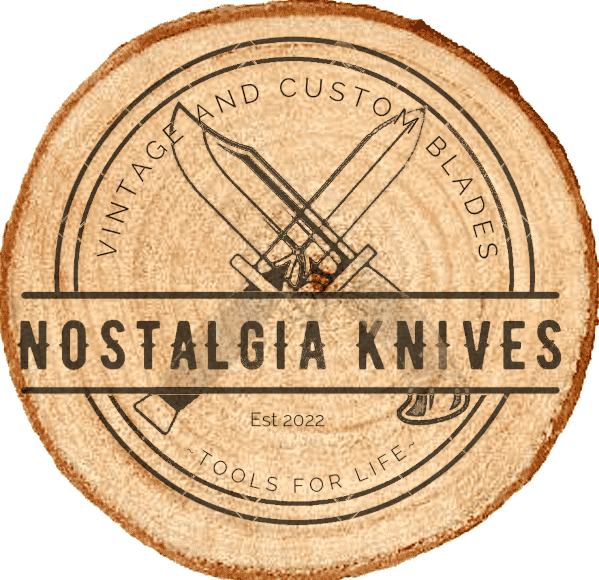Parker Cutlery Company

Parker Cutlery Company, also known simply as Parker, was an American knife manufacturer that operated from the late 1960s to the early 1990s. The company gained a reputation for producing a wide range of knives, including traditional pocket knives, fixed-blade knives, and various specialty knives. While it was in business for a relatively short period, Parker Cutlery left a lasting impact on the knife-collecting community.
Founding and Early Years
Parker Cutlery Company was founded in 1968 by Claude Brown and Dave Rise. The company was based in Chattanooga, Tennessee. From the outset, Parker aimed to create high-quality knives that catered to both collectors and enthusiasts. One of the distinguishing features of Parker knives was their use of high-grade materials, precision craftsmanship, and attention to detail.
Product Range and Innovations:
Parker produced a diverse range of knives, including traditional slip joint pocket knives, hunting knives, and commemorative pieces. The company was known for its innovative designs and collaborations with renowned knife makers. One of their notable collaborations was with knife designer Blackie Collins, which resulted in the creation of several popular knife models.
Parker also gained recognition for its extensive use of unique and exotic handle materials, such as genuine stag, mother-of-pearl, and various hardwoods. This commitment to quality materials and craftsmanship contributed to the allure of Parker knives among collectors.
Commemorative and Limited Edition Knives
Parker Cutlery was particularly active in producing commemorative and limited-edition knives. These knives often featured intricate engravings, special handle materials, and unique blade etchings. Commemorative knives were often created to celebrate specific events, anniversaries, or historical figures, adding an additional layer of appeal to collectors.
Decline and Closure:
Despite initial success and a strong presence in the knife-collecting community, Parker Cutlery faced financial challenges in the late 1980s. The company filed for bankruptcy in 1991, marking the end of its operations. The closure of Parker left collectors with a limited supply of these knives, making them sought-after items in the secondary market.
Legacy
While Parker Cutlery Company had a relatively short existence, its legacy lives on through the knives it produced. Many of the company’s knives are now considered collectible, with enthusiasts valuing them for their craftsmanship, materials, and unique designs. The demise of Parker also contributed to the rise of other knife manufacturers and custom knife makers who filled the void left by its closure.
In conclusion, Parker Cutlery Company played a significant role in the knife industry during its active years. The company’s commitment to quality and innovation, as well as its production of commemorative and limited-edition knives, has left a lasting impact on the world of knife collecting.
How to create the different type of cutting edge grind types.
Creating different knife cutting edge grind types requires careful consideration of the intended use of the knife, the type of material being cut, and the desired balance between sharpness and durability. Here is a detailed instructional document explaining some common knife edge grinds and their purposes:
1. Flat Grind:
Description: A flat grind is a straight, V-shaped edge that extends from the spine to the cutting edge.
Purpose: This grind provides excellent slicing performance and is easy to sharpen. It is suitable for a variety of tasks, including slicing and chopping.
How to create a flat grind:
Use a bench grinder or belt sander with a coarse grit to establish the primary bevel.
Maintain a consistent angle on both sides of the blade to ensure symmetry.
Progressively move to finer grits for a sharper edge.
2. Hollow Grind:
Description: The hollow grind creates a concave, inward curve on both sides of the blade, forming a thin cutting edge.
Purpose: Offers superior cutting performance and is excellent for precision tasks. The thin edge enhances sharpness but may sacrifice some durability.
How to create a hollow grind:
Use a grinding wheel or belt sander to create the concave shape by tilting the blade while grinding.
Pay attention to maintaining an even curve on both sides.
Finish with finer grits to refine the edge.
3. Convex Grind:
Description: The convex grind features a curved edge that gradually slopes from the spine to the cutting edge.
Purpose: This grind combines durability and slicing ability. It excels in heavy-duty tasks and is less prone to chipping than some other grinds.
How to create a convex grind:
Use a belt sander or a series of abrasive stones to create a gradual convex shape.
Start with a coarse grit and progress to finer grits for a polished edge.
Use a consistent rocking motion to maintain the curve.
4. Chisel Grind:
Description: The chisel grind has one flat side and one beveled side, creating a single cutting edge.
Purpose: Ideal for precision tasks like woodworking or carving. It’s easy to control and provides a sharp edge.
How to create a chisel grind:
Use a bench grinder or belt sander to create a flat side.
Bevel the other side to create the cutting edge.
Hone the edge with finer abrasives for sharpness.
5. Scandi Grind:
Description: Also known as a Scandinavian grind, it is a flat grind with a single bevel extending from the spine to the edge.
Purpose: Offers excellent control for woodworking and carving. It is easy to sharpen and maintain.
How to create a Scandi grind:
Use a flat grinding surface to establish the primary bevel.
Create a single bevel by grinding one side at a specific angle.
Hone the edge for sharpness.
Remember to always wear appropriate safety gear, follow proper grinding techniques, and take your time to achieve the desired results. Additionally, consider the type of steel used in the knife, as different steels may require specific approaches during the grinding process.
The Kukri Blade: A Curved Legacy of Tradition and Utility
The Kukri Blade: A Curved Legacy of Tradition and Utility
Introduction:
The Kukri, a distinctive and curved blade with roots deeply embedded in South Asian history, stands as an emblem of tradition, utility, and cultural significance. Originating in the Himalayan regions, particularly Nepal and Northern India, the Kukri has a rich history that spans centuries, with its unique design serving a multitude of purposes, from a formidable weapon to an everyday tool and symbol of cultural heritage.
Historical Origins:
The history of the Kukri can be traced back to ancient times, with its roots entwined in the diverse cultures of the Himalayan foothills. The word “Kukri” is thought to be derived from the Sanskrit word “kukkara,” which refers to a curved blade. The blade’s design, characterized by a distinctive forward curve, a deep belly, and a sharp pointed tip, has evolved over the centuries, adapting to the needs of different communities and regions.
India: A Crucible of Kukri Evolution:
While the Kukri is most commonly associated with Nepal, its presence and evolution in India are integral to understanding the complete narrative of this remarkable blade.
In India, the Kukri has historical significance, particularly in the region of Northern India, including states like Himachal Pradesh and Uttarakhand, as well as among the Gurkha communities.
Gurkhas and the Kukri:
The association between the Gurkha people and the Kukri is legendary. Gurkhas, known for their bravery and martial prowess, have been wielding the Kukri for generations. The symbiotic relationship between the Gurkhas and their iconic blades has become a symbol of identity and honor. The Kukri is not merely a weapon for the Gurkhas; it represents a way of life, a connection to their history, and a testament to their resilience.
Design and Utility:
The design of the Kukri is a testament to its multi-functional utility. The forward curve of the blade enhances chopping efficiency, making it an excellent tool for everyday tasks such as woodcutting and food preparation. Beyond its utilitarian applications, the Kukri’s design is optimized for combat, offering a powerful and versatile weapon with exceptional slashing and stabbing capabilities.
Historical Significance:
The historical significance of the Kukri extends beyond its functional attributes. It has been an integral part of religious ceremonies, cultural rituals, and rites of passage. The symbolic importance of the Kukri is evident in its presence in various traditional dances, folklore, and the rich oral traditions of the communities that have embraced this iconic blade.
Military Use:
The Kukri gained international recognition through its association with the Gurkhas, who served as soldiers in the British and Indian armies. The bravery and skill of Gurkha soldiers wielding the Kukri became legendary, particularly during both World Wars. The Kukri’s service as a military weapon underscored its effectiveness in close-quarters combat and its role as a symbol of loyalty and courage.
Evolution and Global Appeal:
Over the years, the Kukri has undergone subtle design changes to cater to different needs and preferences. While traditional designs persist, contemporary variations may feature modifications in blade length, materials, and handle construction. The global appeal of the Kukri has transcended its cultural origins, finding enthusiasts worldwide who appreciate its unique blend of form and function.
Conclusion:
The history of the Kukri is a journey through time, culture, and functionality. From its origins in the Himalayan regions to its role in Indian history, particularly among the Gurkha communities, the Kukri’s legacy is one of adaptability and resilience. As it continues to hold a revered place in the hearts and hands of those who wield it, the Kukri remains a living testament to the intricate interplay between tradition, utility, and cultural identity.


